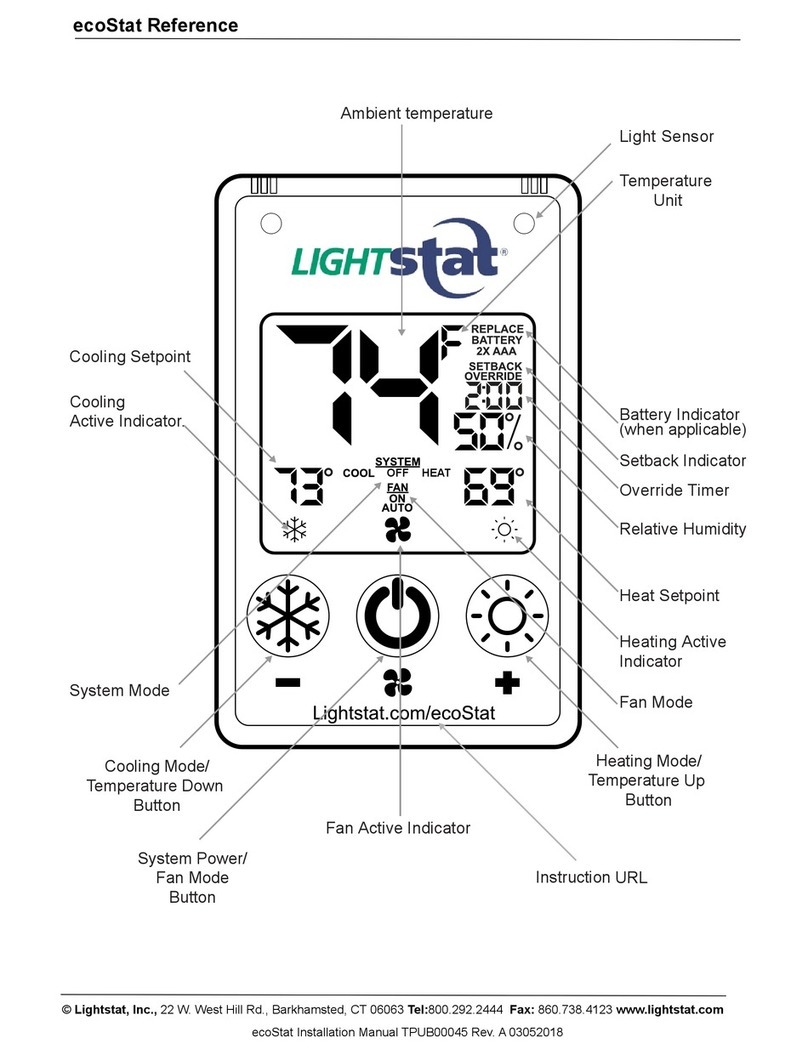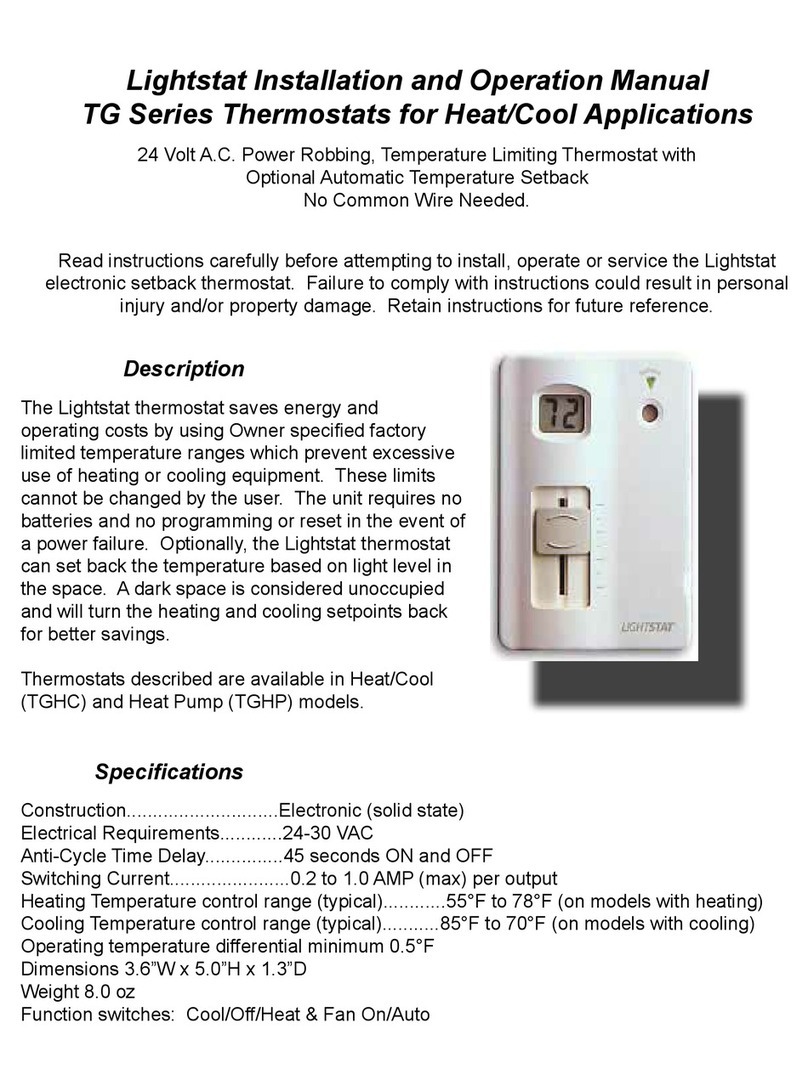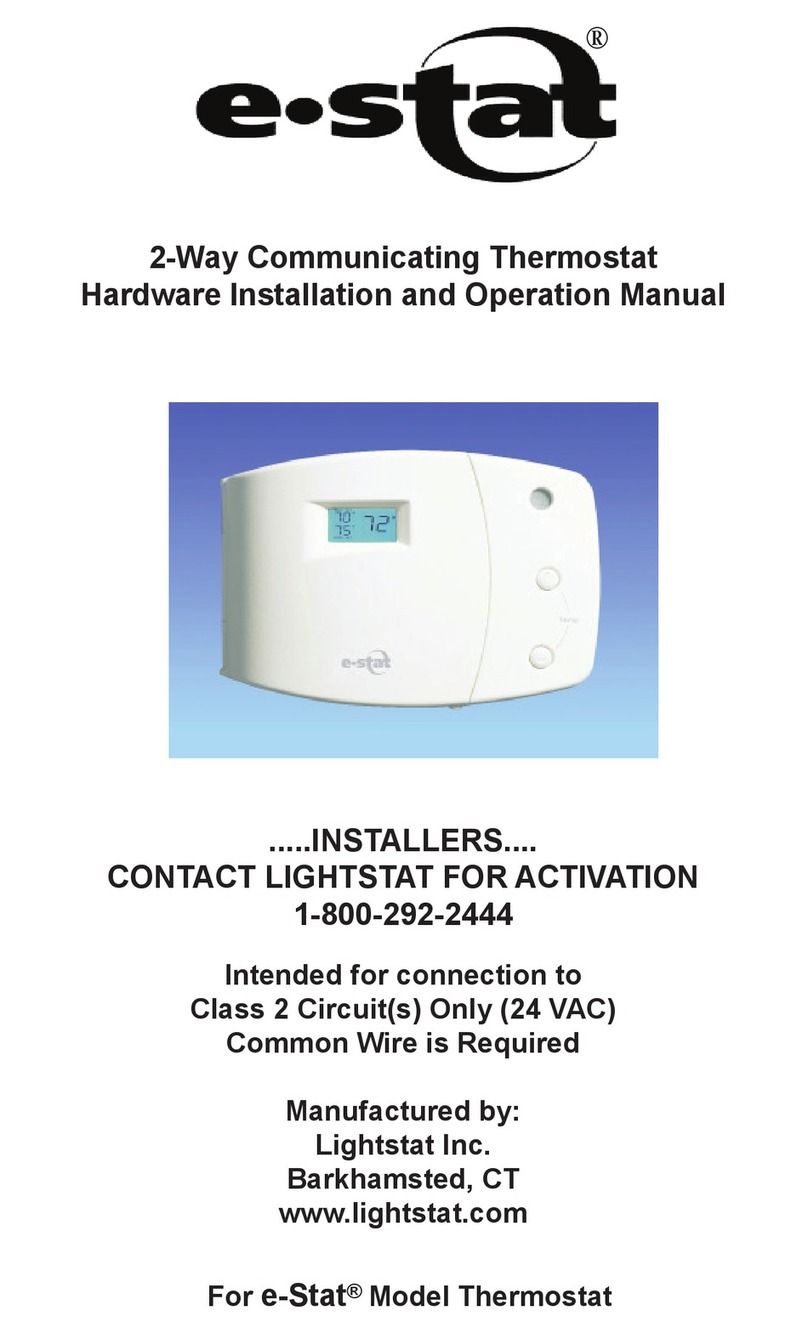2
CONGRATULATIONS on your purchase of a Lightstat TME. It represents
reliable, modern, electronic tempe rature control in addition to unique energy
saving features.
Features
• 1 Amp relay switching of up to 6 HVAC loads.
• Automatic Changeover from Heating to Cooling with a 5º F deadband
between heating and cooling to prevent short cycling of equipment.
• Automatic Setback of temperatures based on light sensitivity or contact
closure (model dependent).
• System ON/OFF switch, and Fan switch for AUTO or ON fan operation.
• PRE-CONDITION feature to pre-heat or pre-cool the building prior to
occupancy at the start of the day.
• Fan control settings for Heating to allow either thermostat controlled fan
(typical of electric heat) or a limit switch controlled fan (typical of gas heat).
• Auxiliary output options to permit the O/B output to be active with a call for
Heat or Cool; for heat pump reversing valve.
• A1-A2 isolated dry contact outputs for night shutdown of dampers or
equipment.
• Connections for using a Remote Room Sensor.
• Connections for using a Supply Air Sensor.
• Light Sensitivity adjustment to permit operation in bright or dim areas (model
dependent).
• Stages of Heat and Cool stagger ON.
• Proportional plus Integral control for accurate, even temperature control.
• Factory set temperature limits to prevent overheating and overcooling.
• Minimum ON and OFF time delays for compressor protection.
• Field Check button to cancel time delays for checkout in the eld.
• Fan harvests energy from coils.
• Occupancy of less than two hours will not affect pre-conditioning timing.
• Random restart after Setback or power failure.
• RTU visible alarm.
































